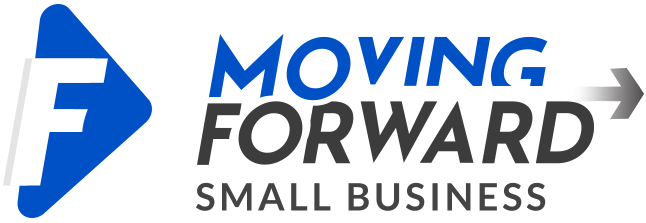Key Highlights
- Inbound calls are very important for customer service. They affect how happy customers are and whether they keep using the service.
- To handle calls well, businesses need skilled workers, clear processes, and the latest technology.
- It’s crucial to focus on the customer experience from the very first greeting. This includes quickly figuring out what the customer needs.
- Staff training should cover basic instructions as well as ongoing lessons. This helps the team stay updated with best practices and changing customer needs.
- Technology is key in managing inbound calls. Call center software and CRM systems are especially helpful for small businesses.
Introduction
In today’s tough market, providing a great customer experience is very important for small businesses. Handling inbound calls well is a key part of this, and having a dedicated customer service team can significantly enhance the process. Each incoming call is a chance to help a customer and to create a good impression that lasts. This guide shares important tips and strategies to help small businesses improve their inbound call handling. It aims to raise customer satisfaction and help businesses grow.
Understanding Inbound Calls in Small Businesses

Inbound calls connect customers directly to your business. Unlike outbound calls, where you make the first move, inbound calls happen because customers need help, have questions, or are concerned. These calls can be about things like asking about products, placing orders, or needing technical support or billing help.
It’s very important to manage these calls well. A good experience during an inbound call can lead to more loyal customers, repeat sales, and good referrals. But if the calls are not handled properly, it can cause frustration for customers, leading them to leave and harming your brand’s image.
Defining Inbound Calls and Their Importance
Inbound calls are calls that come from people who need help, information, or support about your products or services. These calls usually go to a specific team called a call center or customer service department. Here are some examples of inbound calls:
- Customers needing help with a product problem.
- Potential buyers asking for product information.
- Current customers wanting to change their account details.
Inbound calls are very important for businesses. They give a direct way to meet customer needs and fix problems. When businesses handle these calls well, they can create trust, build strong relationships with customers, and improve customer loyalty.
Comparing Inbound and Outbound Calls: Key Differences
While both inbound and outbound calls involve talking with customers on the phone, they have different purposes and styles. Knowing these differences is important. It helps you train your call center agents properly.
Inbound calls are reactive. Customers make these calls first, and your team responds. Agents in an inbound call center need good listening skills, empathy, and the ability to understand and meet different customer needs.
On the other hand, outbound calls are proactive. In this case, your agents reach out to customers or potential clients. This can be for telemarketing, checking leads, setting up appointments, or follow-up calls. Outbound call center agents need to have strong communication skills, good product knowledge, and a focus on getting results.
Optimizing the First Point of Contact

The first few seconds of an inbound call are very important. A good first impression can lead to a helpful and enjoyable conversation. Customers like a quick and friendly response that shows their call matters.
If calls are not answered quickly or if greetings are too formal, it can turn away potential customers and leave a bad impression.
Greeting Strategies That Make a Difference
A good greeting is more than just a polite gesture. It is a chance to show professionalism, connect with callers, and make them feel confident. Here are some important parts to include in your greeting plan:
- Answer quickly: Aim to pick up calls within the first few rings. This shows the caller that you respect their time.
- Introduce yourself and your business: Start your greeting with a friendly, “Thank you for calling [Your Business Name]. This is [Your Name]. How may I help you today?”
- Be upbeat and positive: Your voice should be full of enthusiasm and ready to help.
Keep in mind the first call is often a new customer’s first contact with you. Making a good first impression is very important.
Identifying Caller Needs Efficiently
Once you say a friendly hello, focus on figuring out what the caller needs quickly and correctly. Not understanding why they called can cause frustration and waste time.
Start by really listening to what the customer asks. Notice their words, how they sound, and the feelings behind what they say. You should ask questions that clear up any confusion to make sure you know their worries. After you understand what the customer needs, repeat it back to them to make sure you’re right before moving on.
This small step shows that you have listened well and gives the customer a chance to correct anything if needed. Knowing what the caller wants is very important for a smooth and successful call.
Enhancing Caller Experience Through Effective Communication
Effective communication is more than just sharing information. It is about creating a connection with your callers. You want them to feel heard and understood. Using clear and simple language is very important.
Do not use technical words, acronyms, or special terms that the caller may not know. Instead, choose everyday language that is easy to understand.
Active Listening Techniques for Better Understanding
Active listening is a very important skill. It helps you understand the caller’s point of view, connect with them better, and find good solutions. When you give your complete attention to the speaker and notice both their spoken and unspoken cues, you show that you care. This creates a better customer experience.
A helpful technique is “reflective listening.” This means you repeat back what the caller said to ensure you understand them correctly. You can say something like, “So, if I understand correctly, you are having issues with…” Another useful tip is to use short responses like “I see,” “Uh-huh,” or “I understand.” These show you are paying attention. Just make sure these responses feel natural and do not interrupt the conversation.
When you get better at active listening, each inbound call becomes a great chance to improve customer satisfaction and strengthen relationships.
The Role of Empathy in Call Handling
Empathy means understanding and sharing how someone else feels. In a call center, empathy is very important. It helps build a good connection with customers and makes their experience better.
When talking to customers on the phone, try to see things from their side. This is crucial. Even if you can’t fix the problem right away, showing that you care about their feelings can improve their experience. Instead of saying, “I can’t help you with that,” you could say, “I understand your frustration, and I’m sorry you’re having this issue…”
When you use empathy in your calls, you show that your business is kind and understanding. This helps build better relationships with customers and improves their overall experience.
Call Routing Strategies for Small Businesses

Call routing is important for handling incoming calls well. It helps connect callers to the right agent or department quickly. This is especially crucial during busy times with high call volume, as long wait times can lower customer satisfaction.
For small businesses, having a good phone system with smart call routing can really boost how effectively calls are handled and improve the customer experience.
The Basics of Call Routing and Its Advantages
Call routing is a key part of modern phone systems. It helps businesses send incoming calls to the right people or departments. This makes handling calls easier, cuts down wait times, and boosts the efficiency of your customer service.
A popular way to route calls is with an IVR system or interactive voice response. This system talks to callers and gives them a menu to choose from. Based on what they select, calls go to the best agent or department for help.
There are many benefits to good call routing. When you send calls to the right people right away, fewer calls get transferred. This means shorter wait times and better chances of solving issues on the first call. All of this leads to higher customer satisfaction.
Implementing an IVR System for Efficient Call Management
Interactive voice response (IVR), a cornerstone of many modern contact centers, is an automated system that interacts with callers, providing them with a menu of options to navigate through using their phone’s keypad or voice commands. IVR serves as a virtual receptionist, streamlining call flow and enhancing the efficiency of your call handling.
For businesses experiencing significant call volume, an IVR system can be invaluable in managing caller traffic and reducing agent workload. Here are the key benefits:
| Feature | Benefit |
| Self-Service | Allows callers to resolve simple queries independently, reducing agent workload. |
| 24/7 Availability | Provides round-the-clock support, even outside of business hours. |
| Call Prioritization | Routes urgent calls to the front of the queue, ensuring timely assistance. |
Training Staff for Excellence in Call Handling
Investing in good training for your staff is very important for creating great inbound call experiences. Agents who are well-trained can handle different types of customer interactions. This includes simple questions and tricky complaints.
With effective training, your team will have the skills and knowledge to manage calls in a professional and efficient way. This helps leave customers with a positive view of your business.
Key Components of an Effective Call Handling Training Program
A good training program is important for staff members. It helps them do well in their jobs and provide excellent customer service. Here are some key parts to include:
- Product and Service Knowledge: Make sure your team knows your products and services. This knowledge helps them answer questions well and offer good recommendations.
- Call Handling Skills: Teach staff members how to greet customers, listen actively, communicate clearly, and end calls properly. This keeps the interaction professional.
- Empathy and Conflict Resolution: Train staff to handle tough situations. They should stay calm, solve problems peacefully, and reduce the heat during difficult calls.
Continuous Training and Feedback Loops for Staff Improvement
Training should not happen just once. It should be a regular part of your work. Customer needs change, new technology comes out, and processes may change, too. Continuous training helps your staff stay updated with the best practices. This way, they can handle the changing demands of customer service.
Getting feedback is key to improving staff performance. Ask both agents and customers for their thoughts on how things can get better. Regular performance reviews are important. Track things like first-call resolution rates, handle times, and customer satisfaction scores. This information shows the strengths and weaknesses of individuals and teams. Then, you can focus training where it’s needed.
Creating a culture of ongoing learning and feedback helps your staff improve their skills. This boosts the quality of handling calls.
Leveraging Technology in Inbound Call Management
In today’s world, technology is very important for better managing calls. Using the right call center software can greatly help with call handling, boost how well agents work, and increase customer satisfaction.
Things like call routing, automated greetings, call recording, and performance insights can make operations run smoother. This way, callers will have a more professional experience.
Essential Call Center Software Features for Small Businesses
Investing in call center software with many features can really help small businesses manage incoming calls better. The right software can make operations smoother, help agents do their jobs, and create a better experience for customers.
Key features to look for include:
- IVR for better call routing and self-service options.
- Skill-based routing to match callers with the right agents.
- Call queuing and virtual hold to handle many calls at once.
- Integrated reporting and analytics to keep track of important metrics and spot areas for improvement.
By using these tools, small businesses can make their customer support work more efficiently. This can lead to higher customer satisfaction and greater loyalty.
The Impact of CRM Integration on Customer Service
Integrating your call center software with a CRM system can really improve your customer service. A CRM system is a central place where you can keep important customer information, like their contact history, what they bought, and past interactions.
When an agent gets an inbound call, the CRM helps find the caller’s information right away. This means the agent can see their past history and preferences instantly. By doing this, agents can give them personal service, better understand their needs and help them more effectively.
With quick access to customer data, agents can solve issues faster. This helps to reduce the time they spend on calls, increases the rates of first-call resolutions, and leads to happier customers overall.
Measuring Success in Inbound Call Handling

Effective call handling is more than just picking up the phone. It’s about always giving great customer service. To check how well you are doing, you need to set clear goals and look at key performance indicators (KPIs).
By regularly checking and analyzing these KPIs, you can get useful ideas to improve your plans, make your processes better, and make sure that your inbound call handling meets or even surpasses what customers expect.
Important Metrics to Track and Analyze
Tracking key performance indicators (KPIs) is very important for call centers. It helps them see how well they are doing and find ways to improve. Here are some key metrics to think about:
- First Call Resolution Rate (FCR): This shows the percentage of calls that get solved in the first interaction. It tells you how good your call center services are.
- Average Handle Time (AHT): This measures the average time of a call. It counts from when the call starts to when it ends, including hold times and extra work after the call. Lowering AHT can make things more efficient and help keep customers happy.
- Customer Satisfaction (CSAT) Score: This score comes from surveys given after calls. CSAT shows how satisfied customers are with the service they got. Higher scores indicate better call center performance.
Utilizing Data to Improve Call Handling Strategies
The information you get from your key performance indicators (KPIs) should not just be saved. You need to use it to improve your call handling. By looking at trends and areas that need work, you can improve your processes and help your agents offer great service.
For example, if your data shows high call abandonment rates at certain times, it might mean you do not have enough staff during busy times. You can fix this by changing your workforce management plans. Also, if you see frequent customer complaints, this could point to problems with a product or issues in your customer service actions.
Using these data insights helps in making smart decisions. It allows you to improve your call handling and, in turn, boosts customer satisfaction and loyalty.
Conclusion
In conclusion, being good at inbound call handling is very important for small businesses to do well in customer service. By focusing on the first contact, you can improve the caller’s experience with good communication. It helps to have smart ways of call routing and to train staff well. Using technology also makes things easier. Tracking important numbers and using data to improve are key steps to handling inbound calls successfully. Join our Strategy Alignment and Execution membership community today and start with our 6+ hours of training on “Inbound Marketing Strategies for Your Small Business.”
Frequently Asked Questions
How Can Small Businesses Improve Inbound Call Handling?
Small businesses can handle inbound calls better by creating a culture that focuses on customers and values great customer service. By following best practices in their inbound calling strategy, like listening closely and speaking clearly, they can improve the customer experience.
What Are the Benefits of an IVR System?
An IVR system makes call handling easier. It helps provide good customer service, even when there are many calls coming in. With automated menu options, the IVR guides customer inquiries to the right teams or resources.
How Often Should Call Handling Training Be Conducted?
Call handling training should happen all the time, not just once. Regular refresher courses and new training on technology help staff members stay updated on best practices. This keeps call handling effective and improves customer satisfaction.


